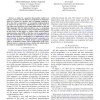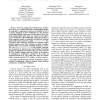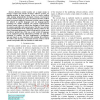18 search results - page 3 / 4 » vamos 2010 |
VAMOS
2010
Springer
13 years 6 months ago
2010
Springer
Feature models are a common way to represent variability in software product line engineering. For this purpose, most authors use a graphical notation based on FODA. The main drawb...
VAMOS
2010
Springer
13 years 6 months ago
2010
Springer
Deriving products from a software product line is difficult, particularly when there are many constraints in the variability of the product line. Understanding the impact of variab...
VAMOS
2010
Springer
13 years 6 months ago
2010
Springer
A feature is a program characteristic visible to an end-user. Current research strives to encapsulate the implementation of a feature in a module. Jak is a language extension to Ja...
VAMOS
2010
Springer
13 years 6 months ago
2010
Springer
Abstract--One of the design goals of Product Line Architectures (PLAs) is to remain stable while accommodating changes of stakeholder's requirements. However, the stability of...
VAMOS
2010
Springer
13 years 6 months ago
2010
Springer
Revision control systems are a major means to manage versions and variants of today's software systems. An ongoing problem in these systems is how to resolve conflicts when me...



